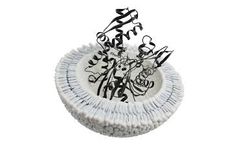Cell Migration Articles & Analysis
18 news found
The microarray offers a diverse range of lymphoma subtypes, including diffuse B-cell lymphoma, Burkitt lymphoma, follicular lymphoma, Hodgkin’s lymphoma, Lennart lymphoma, mucosa-associated lymphoma, anaplastic large cell lymphoma, angio-immunoblastoid lymphadenopathy T-cell lymphoma, T-cell lymphoma, plasma ...
Its scientists can utilize high-content imaging, nanoparticle imaging, imaging flow cytometry, time-lapse imaging, and other techniques to image cell structure, cell migration, cell proliferation, pathogen infection mechanisms, and interactions between protein ...
CD Bioscience has been developing imaging technologies for many years and uses high content imaging, nanoparticle imaging, imaging flow cytometry, time-lapse imaging and other technologies to image cellular structures, cell migration, cell proliferation, pathogen infection mechanisms and protein molecule interactions. ...
Alfa Chemistry offers a high-purity recombinant human collagen COL1, which can be used in numerous applications such as coating & 3D cell culture. Another notable product from Alfa Chemistry's portfolio is Recombinant Human Pro-Collagen Type I (COL1A1). ...
Micron-thick tissue sections enable the labeling and characterization of individual cells but do not allow the detection of three-dimensional (3D) features of biological samples. ...
Lipids are essential to many body functions and serve as the building blocks for living cells. Alfa Chemistry has been an ISO 9001:2015 certified supplier of nearly all forms of lipids and fatty acids and continues to broaden its product lines by adding phospholipids, modified lipids, and functionalized lipids. ...
Glioblastoma is a type of glioma, which is a brain tumor that begins in the star-shaped glial cells that surround and support nerve cells in the brain. GBM is a Grade IV type of brain tumor. ...
Featured in the abstract are preclinical data from in vitro and cell-based assays that demonstrate how narazaciclib’s inhibitory profile differentiates it from the FDA-approved CDK4/6 inhibitors palbociclib, ribociclib, and abemaciclib. ...
[Nasdaq: BCDA], a developer of cellular and cell-derived therapeutics for the treatment of cardiovascular and pulmonary diseases, today announced that the U.S. ...
The abstract is available here. PAD4 activity in tumor cells may play a significant role in cancer metastasis. The first-in-class mechanism of PAD4 inhibition reduces neutrophil extra-cellular traps (NETs) which stimulates cancer cell adhesion, migration and invasion. ...
These glycoproteins are often involved in cell recognition and can serve as surface markers or surface antigens for a particular cell or cells at a particular stage. 3. ...
Exosomes are picking up steam among scientists because they can perform a role in the immune response, antigen presentation, cell migration, cell differentiation, and tumor invasion. Exosomes, which provide a mechanism for macromolecules to be exchanged between cells, play a part in the development of various illnesses, ...
Higher concentrations of HA have a positive effect on corneal health and comfort when inserting and wearing contact lenses. Corneal epithelial cells show higher migration and proliferation. Also HA is released from the contact lens over a longer period of time. ...
Exosomes are released from living cancer cells as an active metabolic process, and carry RNA, DNA and proteins. ...
Test grafts show promising results. Within one week, living cells migrate from the host tissue into and throughout the graft. Within three weeks, blood vessels begin to form within the graft and new skin forms over the graft. ...
While transplanted HUCBCs have been found to selectively migrate to the injured brain, past and recent research has discovered that few transplanted HUCBCs express neural cell characteristics, and few find their way to the ischemic region of the brain. ...
According to the authors of recent research from New York City, New York, "The regulation of adult stem cell migration through human hematopoietic tissue involves the chemokine CXCL12 (SDF-1) and its receptor CXCR4 (CD184). In addition, human leukocyte elastase (HLE) plays a key role." "When HLE is located on the cell surface (HLE(CS)), it acts ...
Referenced Documents (purchase separately) ASTM Standards D395 Test Methods for Rubber Property--Compression Set D412 Test Methods for Vulcanized Rubber and Thermoplastic Elastomers--Tension D430 Test Methods for Rubber Deterioration--Dynamic Fatigue D624 Test Method for Tear Strength of Conventional Vulcanized Rubber and Thermoplastic Elastomers D792 Test Methods for Specific Gravity ...














